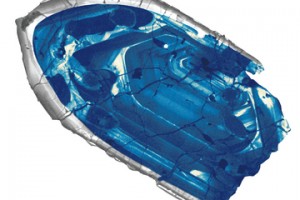by Jack
Today was the first part in a 4 part lecture series presented by the Olli group at Chico State. It’s titled Science, Ethics and Philosophy and it’s being presented by 4 very accomplished professors, Stewart Monroe, Scott Perry, Dennis Daniel and Sydney Wilde.
Professor of Geology, Stewart Monroe, began the lecture series today by explaining the use of the word ‘theory’ and how it is a little different than is commonly thought by the public. Science uses the word theory, but its supported with facts and reproducible results. It begins with a hypothesis, which is basically just an idea how something might work or be explained. So the idea isn’t proven, its just a thought. However, to become a theory it has to be explainable and the results provable by others using the same set of parameters as the discoverer.
A theory in science lasts only until it’s proven wrong or replaced by a better theory. So, nothing in science is above review. All “facts” are subject to examination at any time and if any don’t hold up, they are replaced or discarded.
To become a credible theory, a scientist has to submit his work for peer review and if passes and its acceptable by an editor, it can be published. This can occur in any number of reputable journals. If I recall correctly, only about 7% of submissions are actually approved because they failed somewhere along the line of the peer review process.
Remember the two scientists from Utah that thought they had invented cold fusion? They claimed they could replicate their results, but when they tried the experiment failed. This would have been huge, it would have changed everything…overnight ,but the alleged results could never be replicated. One of the original researchers has died and his colleague has continue the work, still believing cold fusion is possible.
Science has been subjected to a lot of criticism, some right and some wrong, over the centuries. Most often science caused a controversy when it clashed with commonly held assumption or belief.
There’s a lot of myth and misunderstandings that still lingers and gets in the way of modern education. For example, I bet most of us think Columbus set sail to prove the world was round, right? Nah, that’s the myth part. Most of the educated people in his day knew the world was round, his voyage was really to determine how far away India was; Columbus thought it was far shorter than most believed and he was proven absolutely 100% wrong! It was about as far away as most of the science community thought. The world being round is an idea that goes back at least 2000 years before Columbus came along. Greek philosopher Pythagoras is generally credited for being the first to figure out the world was round and he did a pretty fair job estimating its size too.
Professor Monroe talked about the scientific dating methods of the earth’s geology and he explained some anomalies that opened up this dating to criticism by people who didn’t have the benefit of the full story. The exact age of the earth has been the subject of debate for a thousand years, but nobody even came close until the last century when radioactive decay came into view. Now we can date the age of the earth with a number of radioactive elements that serve to cross check the results. The earth is about 4.54 billion years old, but the oceans, sand on the beach, volcanic flows are much, much younger. Meteorite dating shows the oldest to be about 4.5 billion years old.
 “Well, scientists just took one of geology’s biggest controversies and shrunk it down to atomic size. By zapping single atoms of lead in a tiny zircon crystal from Australia, researchers have confirmed the crystal is the oldest rock fragment ever found on Earth — 4.375 billion years old, plus or minus 6 million years.
“Well, scientists just took one of geology’s biggest controversies and shrunk it down to atomic size. By zapping single atoms of lead in a tiny zircon crystal from Australia, researchers have confirmed the crystal is the oldest rock fragment ever found on Earth — 4.375 billion years old, plus or minus 6 million years.
“We’ve proved that the chemical record inside these zircons is trustworthy,” said John Valley, lead study author and a geochemist at the University of Wisconsin, Madison. The findings were published today (Feb. 23) in the journal Nature Geoscience.”
There was a lot more information revealed today, but you get a rough idea of what it was about. Next week will another lecture – so stay tuned!

This is interesting, look forward to the up coming weeks